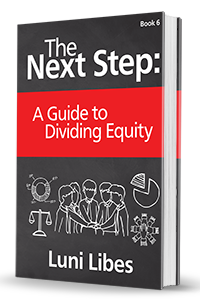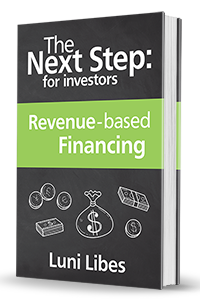The tiny details matter too….
How you act is as important as what you say….
They ask the questions, not you
When telling your story, do not stop to ask questions, rhetorical or otherwise. If you ask a question, you are telling the audience to stop and think, and thinking is the last thing you want your audience to do.
RULE 54:
No rhetorical questions or any questions that ask the audience to stop and think.
Opening questions are such a cliché that I’d say there should be absolutely no exceptions to this rule, but I’ve seen a handful of great purple-cow openings to pitches that engage the audience with the use of questions.
Do not tell the audience how to feel
Neither should you tell the audience how they are feeling or what they should be thinking. With a big enough audience, those statements will not be true for everyone, and everyone who stops to think, “No, that is not true,” is now no longer listening to you and, more importantly, no longer believes you.
RULE 55:
Don’t tell the audience about themselves.
No more than five to seven bullets
No bulleted list should contain more than seven items. Five is generally better than seven. Three is generally more powerful than five. Less truly is better than more.
RULE 56:
No list should have more than seven items.
If you have more items to share, either pick the most important three to five or step back and find a way to group your longer list into three to five generalized terms that you can then speak about in more detail.
Don’t Read Slides
Never stand in front of an audience and read the text on the slides. Slides should be an augmentation to your verbal presentation, not a written-out script. Slides should rarely contain full sentences, and your spoken words should rarely be sentence fragments.
RULE 57:
Do not read the words off your slides.
For bulleted lists, you have limited those lists to just a handful of items, giving you time to talk about each item at least a little bit, rather than simply reciting a long list.
This rule is specific to pitching. I use slide presentations in my teaching, and sometimes I repeat the bullet points verbatim to my students. Pitching, however, is not like teaching. In teaching, you want your students to stop and think. You want all the words on the slides to be read, understood, and remembered. Pitches are stories, not lectures. If your pitch feels like a lecture, something has gone wrong. If so, go back, iterate, and retell it as a story.
Significant Digits
A pitch needs to provide sufficient details, but not all the details. In keeping with that level of detail, all numbers should be presented with just two or three “significant digits,” i.e., all numbers should be rounded off, without excess fractions, decimals, etc.
RULE 58:
Round all numbers to two or three digits of detail.
For example, if your market research shows 123,456 potential customers and $5,678,910 of opportunity, your pitch should talk about 120,000 customers and $5.7 million of opportunity. Or, if your financial projections are for $45,678,901, round that to $45.7 million or just $45 million.
Providing all the other digits only detracts from the story you are telling.
One and only One Presenter
The best pitches are delivered by a lone presenter. Handoffs between presenters are rarely smooth, and handoffs can create moments where the audience wonders why the other presenter is necessary.
RULE 59:
Pick one person on your team to present the whole presentation.
There will likely be times when the normal presenter is not available, and thus it is helpful if other members of the team can deliver the pitch, too. But in any given pitch, outside of the Q&A, just one person should be presenting.
Chiming In
The other team members can be present at the pitch but should be there to support the main presenter. The supporters should not chime in with extra details. The only exceptions are if the presenter misquoted a very important fact or if he or she gets completely flustered and loses control of the conversation.
RULE 60:
Supporters should speak only upon request.
This urge to speak most often arises in the Q&A period. The presenter often provides a reasonable answer but without every detail. Supporters are often responsible for and proud of those details and chime in to fill in those gaps. The problem is that such “second answers” have the subtle, unconscious effect of making the initial answer seem like a half-truth or an outright lie. Repeated second answers make the presenter seem less reliable and, at worst, can ruin the goodwill built up throughout the whole presentation.
RULE 61:
Avoid adding second answers to the Q&A questions.
However, it is still important to show off the whole team and not just in the “team” slide. To achieve this, after each question in the Q&A, the presenter should decide whether to answer the question himself/herself or redirect the question to someone on the team. Delegation of answers subconsciously adds to the leadership reputation of the speaker while letting the ideal team member answer the question, showing off that person’s poise and knowledge.
RULE 62:
Redirect questions to the right member of your team.
So… Like… You Know… OK?
Some presenters, especially when nervous, repeat unnecessary words and phrases throughout a presentation. This repetition detracts from the quality of the presentation.
Examples of this include: starting each sentence with “so”; interjecting the word “like” in the middle of sentences; interjecting or ending statements with “you know”; or ending each statement with the question, “OK?”
RULE 63:
Do not start and end each sentence with the same word or phrase.
A new addition to this list is “imagine,” most commonly heard in the opening, “Imagine a world where….” Avoid “imagine” unless absolutely necessary.










